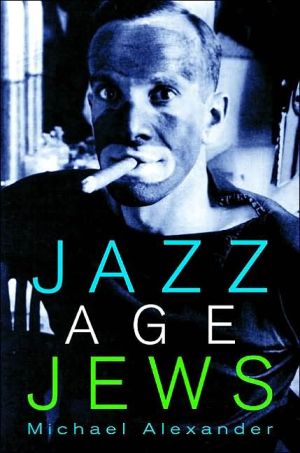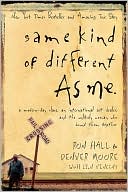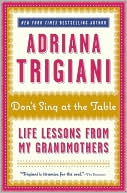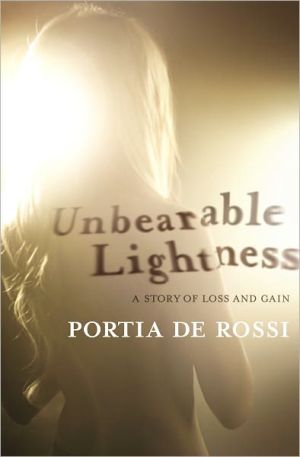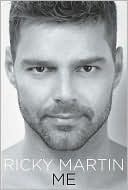Jazz Age Jews
By the 1920s, Jews were—by all economic, political, and cultural measures of the day—making it in America. But as these children of immigrants took their places in American society, many deliberately identified with groups that remained excluded. Despite their success, Jews embraced resistance more than acculturation, preferring marginal status to assimilation.\ The stories of Al Jolson, Felix Frankfurter, and Arnold Rothstein are told together to explore this paradox in the psychology of...
Search in google:
"Michael Alexander's Jazz Age Jews is an imaginative interpretation of American Jewish history. Beautifully and forcefully written, this account focuses on how Jews in the United States have perceived of themselves as outsiders. Alexander's arguments will raise eyebrows, infuriate some, and stimulate widespread discussion. Nonetheless, his approach may be a forerunner of a new way to examine American Jewish history."--Leonard Dinnerstein, author of Anti-Semitism in America, America and the Survivors of the Holocaust, and The Leo Frank Case"Jazz Age Jews is a significant contribution to our understanding of American Jewish culture and society. It reinterprets the meaning of Jewish identification with the outsider in the 1920s and demonstrates the profound impact such Jewish behavior and beliefs had on American culture. Alexander knows how to tell a good story and has chosen wonderful case studies as the means to spin his narratives. With new ideas on almost every page, this is an excellent book."--Deborah Dash Moore, author of At Home in America Publishers Weekly Jews and the jazz age: bathtub Manischewitz? Yiddish speakeasies? the Purim massacre? Not exactly. In his deft and provocative book, Alexander sketches how the social position and public perception of American Jews mutated in America during the 1920s. Drawing on a wealth of sources reports in Yiddish newspapers, the history of minstrel shows on Broadway, and papers of Oliver Wendell Holmes this book traces the unique roles played by and the problems faced by descendants of the great waves of turn-of-the-century Jewish immigrants. Alexander argues that, even when they prospered financially, these Jews possessed an "outsider identification" that propelled them to support social justice causes as well as often valorize extralegal activities such as gambling. He paints a vivid portrait of popular anti-Semitism of the time Fitzgerald's malicious portrait of a Jewish gangster in The Great Gatsby; the attempt by Harvard's president A. Lawrence Lowell to institute quotas for Jews at the university, Henry Ford's white-supremacist writings while structuring his book around three pivotal events that shaped thinking about Jews: the Black Sox Scandal, the Sacco-Vanzetti trial and Al Jolson's The Jazz Singer. His arguments in the first two sections are dazzling about Arnold Rothstein's role in the national pastime's scandal and Felix Frankfurter's defense of the Italian anarchists but he is less convincing when critiquing Michael Rogin's Blackface, White Noise: Jewish Immigrants in the Hollywood Melting Pot in his analysis of Jewish performers and blackface in his third example. Despite this, Alexander's commentary is elucidating and insightful, an important contribution to both Jewish and culturalstudies. (Oct.) Copyright 2001 Cahners Business Information.
\ \ Chapter One\ \ \ Arnold Rothstein\ \ \ In 1919 the biggest bookmaker in America was Arnold Rothstein. He could cover any bet—on horse races, casino games, cards, billiards, and for every sport, professional or amateur. He swindled stocks. He corrupted politicians. He ran four illegal casinos. He trained Lucky Luciano and Meyer Lansky in the ways of illicit finance and the organization of crime. And he was never convicted of a single crime, except in the newspapers.\ From the moment the American press learned that the 1919 World Series had been fixed, it has been the public consensus that Rothstein fixed it. Newspapermen such as Damon Runyon began to call him the Brain, the Big Bankroll, the Big Jew Uptown. Some simply called him "A.R." For the remainder of his career Rothstein's name was synonymous with the victimless crime that battered the nation.\ Americans had hoped the World Series of 1919 would welcome home from the Great War victorious soldiers and signal that everyone might settle back into routines of normalcy, isolationism, and contentment. By 1919 baseball was considered America's sport, pure as any children's sandlot game. In this World Series the Chicago White Sox faced the Cincinnati Reds. The Sox had a long roster of colorful, provincial characters, starting with "Old Roman" Charles Comiskey, the self-made owner of the team and whisper-campaign candidate for governor of Illinois. There was Eddie Cicotte, the team's starting pitcher, ladies' man, and dapper Midwestern style-setter. And, of course, there was one of America's most beloved baseball personalities, the illiterate "Shoeless" Joe Jackson, a man so homespun that Comiskey had to guard against his hopping some train back to South Carolina to trade the complicated city life of the baseball star for his old job at the mill.\ These were the good guys. This was a home team. For them, the children of Chicago wagered pennies earned scrounging for foul rags and coal. And it was the children better than anyone who intuited the meaning of the fix when the news broke. The Chicago Tribune reported that as the White Sox left the courtroom after appearing before the first Grand Jury, a small boy tugged at Shoeless Joe's sleeve.\ "Say it ain't so, Joe," the boy pleaded. "Say it ain't so."\ "Yes, kid," Jackson replied, "I'm afraid it is."\ "Well," the boy said, "I never would've thought it."\ Someone, somehow, had smuggled the cynicism of Europe and the Great War into the United States and had succeeded in corrupting the premier symbol of American purity. Who might have done it? Was it Old Roman Comiskey, the man who had spent twenty years building the good name of the team he had founded? Were the players not as innocent and fresh-off-the-farm as they appeared? The media quickly decided, and baseball's weekly periodical, the Sporting News, declared what was on the mind of many a patriotic American: "A lot of dirty, long-nosed, thick-lipped, and strong-smelling gamblers butted into the World Series—an American event, by the way."\ The Black Sox fix was just one of many unfortunate events that some explained as the work of a Jewish conspiracy in America. While the Black Sox scandal flooded the mainstream papers, Henry Ford circulated his own Dearborn Independent, which claimed, repeatedly and inelegantly, that Jews had provoked the Great War for the purpose of profiteering, and continued to dupe honest working Americans through dirty politics, banking, and even jazz. As for the Black Sox, the ballplayers had become yet another variety of pawn in a world increasingly determined by internecine politics, mysterious power, and deception. Somehow a vague, foreign enemy had made his way from the battlefields of Europe to the ballpark in Chicago. Standing behind the enemy was Arnold Rothstein.\ Any history of gambling and financial crime in the 1910s and 1920s must pay some attention to the history of Jews in America. Jews pioneered the modern business of gambling and heavily participated in the closely related business of stock market bucketeering. Those are facts. Without question, other ethnic groups also demonstrated similar proclivities for these fields, most notably Irish Americans. (The Arnold Rothstein story could not be written without reference to at least three different men named Sullivan.) Nevertheless, the histories of American gambling and gray-area finance would be told very differently without Herman Rosenthal, Sam Paul, Louis Webber, Jack Rose, Sam Schepps, Bill Cowan, Izzy Hain, Leo Mayer, Maxie Blumenthal, Sam Adler, Sol Lichtenstein, George Graham Rice (born Jacob Simon Herzig), Nick Cohen, Harry Pollak, Nicky Arnstein, "Cheeks" Ginsberg, Paddy Goldberg, Harold Sonking, Phil Kastel, Jakie Fields, Hyman Turchin, Isaiah Lebow, Emil Fuchs, Joseph Shalleck, George Morton Levy, Maurice Cantor, and of course Arnold Rothstein.\ The business practices of these gentlemen could—and often did—cross into the realm of crime. It may be more precise, however, to say that their pursuits resided in the margins, in the gray area, of the legal American economy. Though bookmaking was sometimes legal, the business of gambling consistently raised suspicions of social taint. Similarly, sometimes practices of double-dealers in the securities business defied the law, and sometimes they rested comfortably within the law's loopholes. In all cases, however, these crafts carried the stigma of ignobility in the larger economic order, despite the fact that Americans called for these services. In these gray areas and within this contradiction—between the services Americans wanted and the social (and sometimes legal) proscription of their providers—Arnold Rothstein and his associates made their livings.\ Thus the Arnold Rothstein story, with its wayward Jews and suspicious money, must describe the uncomfortable territory where stereotype and fact converge. One need hardly mention that the business world of Arnold Rothstein did not constitute a significant portion of the larger Jewish economy. For Jewry in America, the 1910s and 1920s brought unusual economic opportunity and success in perfectly respectable businesses. In the ghettos of Eastern Europe in the nineteenth century, Jews had been estranged from the predominant economy. In America just the opposite was true. Within a generation working-class Jews rapidly (though not easily) entered the middle class, while other Jews gained an economic stature unprecedented in their American history. While Rothstein ran his gambling, loansharking, and bucket-shop operations from his reserved tables at Reuben's and Lindy's delicatessens (both legitimate and successful Jewish restaurant businesses), Adolph Zukor, Carl Laemmle, William Fox, Louis B. Mayer, and the Warner Brothers headed their Hollywood studios; E. A. Filene, Nathan Straus, and Julius Rosenwald ran their department stores; Paul Warburg sat on the Federal Reserve Board; Oscar Straus became Secretary of Commerce under Theodore Roosevelt; and Bernard Baruch appeared as the genius who helped Woodrow Wilson convert the American peacetime economy for war, and then back again. As American business emerged as the preeminent economic power on the world scene, American Jews strode forth, often leading the way.\ Although Rothstein and his kind straggled far behind the legitimate Jewish business world in sheer numbers, their presence in the Jewish imagination was large. The Jewish people understood that a separate, successful economy existed in the underworld and that Jews were not strangers to it. For the Yiddish press, as for much of America, Arnold Rothstein became the underground economy personified. The Black Sox scandal and the murder of Rothstein in 1928 provided moments when Jewry in America could comment on this other Jewish economy in which the most ancient stereotypes of Jews and money seemed to agree with fact. This convergence did not disturb them. Rather, they embraced it.\ The story of Arnold Rothstein helps us understand the strange proclivity that certain Jews in America had for gray-area business at a time when legitimate business was opening to them. Also, Rothstein's story has a larger point. Jewish reactions to Rothstein's business and public behavior explain why the larger community of Eastern European Jews in America accepted and welcomed its controversial brethren precisely for working along the margins of the American business world at a time when so many Eastern Jews were rising higher in the legitimate economy than they had for centuries.\ \ \ Excerpted from Jazz Age Jews by Michael Alexander. Copyright © 2001 by Michael Alexander. Excerpted by permission. All rights reserved. No part of this excerpt may be reproduced or reprinted without permission in writing from the publisher. \ \ \ \
Introduction1Interlude: Jazz Age Economics11Part I."Biznez Iz Biznez": The Arnold Rothstein Story131.Arnold Rothstein152.Gambling in the Time of Rothstein's Youth193.The Rise of Rothstein284.Financial Crime405.The Black Sox and the Jews486.The Jews React55Interlude: Jazz Age Politics65Part II.Frankfurther among the Anarchists: "The Case of Sacco and Vanzetti"697.Felix Frankfurter718.The Young Progressive769.Zion and Cambridge8810.Sacco and Vanzetti9611.Aftermath119Interlude: Jazz Age Culture127Part III."Mammy, Don't You Know Me?": Al Jolson and the Jews13112.Al Jolson13313.Asa Yoelson Discovers the Theater13914.Jewish Minstrelsy Emerges14415.Blackface Arrives on Broadway15016.The Jews on Tin Pan Alley15517.The Jazz Singer167Conclusion: Jazz Age Jews180Notes185Bibliography215Acknowledgments227Index229
\ Philadelphia InquirerA fascinating study. . . . Jazz Age Jews covers its subject without padding or pedantry. . . . A book that takes strong, interesting positions on how the Jews made their way into mainstream America.\ — Sanford Pinsker\ \ \ \ \ Jewish ChronicleAs [Alexander] points out, of all America's ethnic minorities, only the Jazz Age Jews seemed to care for the downtrodden in other groups. . . . If this is revisionist history, I like it.\ — Michael Freedland\ \ \ American Jewish HistoryJazz Age Jews is an accessible and informative contribution to the ongoing dialogue about American Jewish acculturation in the early part of the twentieth century.\ — Andrea Most\ \ \ \ \ The Jerusalem ReportAlexander's genial and generally jargon-free book offers a provocative portrait of how Jazz Age Jews understood their Jewishness.\ — Lev Raphael\ \ \ \ \ Philadelphia InquirerA fascinating study. . . . Jazz Age Jews covers its subject without padding or pedantry. . . . A book that takes strong, interesting positions on how the Jews made their way into mainstream America.\ \ \ \ \ Jewish ChronicleAs [Alexander] points out, of all America's ethnic minorities, only the Jazz Age Jews seemed to care for the downtrodden in other groups. . . . If this is revisionist history, I like it.\ \ \ \ \ The Jerusalem ReportAlexander's genial and generally jargon-free book offers a provocative portrait of how Jazz Age Jews understood their Jewishness.\ \ \ \ \ American Jewish HistoryJazz Age Jews is an accessible and informative contribution to the ongoing dialogue about American Jewish acculturation in the early part of the twentieth century.\ \ \ \ \ Philadelphia InquirerA fascinating study. . . . Jazz Age Jews covers its subject without padding or pedantry. . . . A book that takes strong, interesting positions on how the Jews made their way into mainstream America.\ — Sanford Pinsker\ \ \ \ \ Jewish ChronicleAs [Alexander] points out, of all America's ethnic minorities, only the Jazz Age Jews seemed to care for the downtrodden in other groups. . . . If this is revisionist history, I like it.\ — Michael Freedland\ \ \ \ \ The Jerusalem ReportAlexander's genial and generally jargon-free book offers a provocative portrait of how Jazz Age Jews understood their Jewishness.\ — Lev Raphael\ \ \ \ \ American Jewish HistoryJazz Age Jews is an accessible and informative contribution to the ongoing dialogue about American Jewish acculturation in the early part of the twentieth century.\ — Andrea Most\ \ \ \ \ Publishers WeeklyJews and the jazz age: bathtub Manischewitz? Yiddish speakeasies? the Purim massacre? Not exactly. In his deft and provocative book, Alexander sketches how the social position and public perception of American Jews mutated in America during the 1920s. Drawing on a wealth of sources reports in Yiddish newspapers, the history of minstrel shows on Broadway, and papers of Oliver Wendell Holmes this book traces the unique roles played by and the problems faced by descendants of the great waves of turn-of-the-century Jewish immigrants. Alexander argues that, even when they prospered financially, these Jews possessed an "outsider identification" that propelled them to support social justice causes as well as often valorize extralegal activities such as gambling. He paints a vivid portrait of popular anti-Semitism of the time Fitzgerald's malicious portrait of a Jewish gangster in The Great Gatsby; the attempt by Harvard's president A. Lawrence Lowell to institute quotas for Jews at the university, Henry Ford's white-supremacist writings while structuring his book around three pivotal events that shaped thinking about Jews: the Black Sox Scandal, the Sacco-Vanzetti trial and Al Jolson's The Jazz Singer. His arguments in the first two sections are dazzling about Arnold Rothstein's role in the national pastime's scandal and Felix Frankfurter's defense of the Italian anarchists but he is less convincing when critiquing Michael Rogin's Blackface, White Noise: Jewish Immigrants in the Hollywood Melting Pot in his analysis of Jewish performers and blackface in his third example. Despite this, Alexander's commentary is elucidating and insightful, an important contribution to both Jewish and culturalstudies. (Oct.) Copyright 2001 Cahners Business Information.\ \
